Engineering Ethics and Design Decisions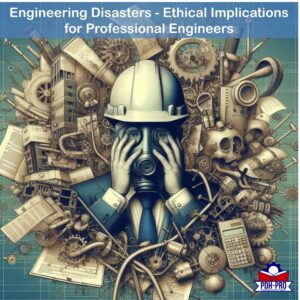
Engineers have developed some amazing things throughout the course of history and changed human lives in profound ways. From transportation to buildings and everything in between, our modern world has been touched in one form or another by an engineer. When these designs work the way they should, they are marvels of innovation and advancement.
However, every so often, something goes wrong with an engineering design. In one sense, it is to be expected, as we are only human. However, the impacts can cost lives, and engineers must, therefore, be cautious and work within the limits of their expertise and experience. The public’s confidence in technology is built on the understanding that engineers will be honest and make safety their first priority. This trust is woven into the canon of ethics all engineers must uphold. Whenever an engineer fails to protect the public or follow
Every engineering failure, no mater how small, erodes the public’s trust in the profession. Without trust, engineers lose the ability to freely innovate and improve our quality of life. Studying engineering disasters is very useful because it allows us to learn from the mistakes of others, thereby reducing the likelihood of another tragedy.
Below are some of the worst engineering disasters that have occurred in modern history. Read our Comprehensive Guide to Engineering Ethics.
Engineering Disaster Courses You May Find Interesting
PDH-Pro offers several ethics courses that explore engineering tragedies.
Case Study – The Fifty-Nine Story Crisis This course explores the competing demands placed on engineers, and the importance of meeting ethical obligations.
Case Study: The PEPCON Disaster Learn about the role of corporate bureaucracy in engineering disasters and how engineers can reduce risks and avoid disasters.
Ethics Case Study: The Bhopal Tragedy This course answers the question – is it ethical to have lower standards for maintenance and training at facilities located outside the United States.
Case Study: The Flint Water Crisis A video presentation of the large-scale lead poisoning tragedy that occurred in present day America.
The St. Francis Dam Failure
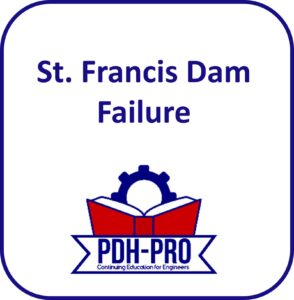 The St. Francis Dam was constructed between 1924 and 1926 to provide a regulatory and storage reservoir for the expanding city of LA. It was located approximately 40 miles northwest of the city in the Sierra Pelona Mountains, specifically in the San Francisquito Canyon. It had been in operation for 2 years before it suffered a catastrophic failure on March 12, 1928.
The St. Francis Dam was constructed between 1924 and 1926 to provide a regulatory and storage reservoir for the expanding city of LA. It was located approximately 40 miles northwest of the city in the Sierra Pelona Mountains, specifically in the San Francisquito Canyon. It had been in operation for 2 years before it suffered a catastrophic failure on March 12, 1928.
As the dam broke, 12.4 billion gallons of water created a 140-ft wave that engulfed the surrounding landscape and didn’t stop until it reached the Pacific Ocean. It is believed that approximately 431 people were killed by the dam’s collapse, and bodies from the incident were recovered at the Mexican border.
The cause of the collapse was due to the fact that a consistent leak dripped into the foundations where it eroded the supporting concrete. Eventually, the structure was unable to sustain its own weight, and the dam broke. The investigation deemed it an error in engineering judgment, but no one received criminal charges.
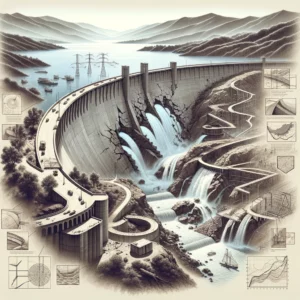 William Mulholland was the chief engineer on this project, and he was a self-taught engineer. Prior to the design of this dam, he had built the Los Angeles-Owens River Aqueduct and numerous embankment dams. The St. Francis Dam was a concrete dam, and Mulholland didn’t have a lot of experience with this type of construction. He had participated in the design of one other concrete gravity dam, the Mulholland Dam, which had been named in his honor.
William Mulholland was the chief engineer on this project, and he was a self-taught engineer. Prior to the design of this dam, he had built the Los Angeles-Owens River Aqueduct and numerous embankment dams. The St. Francis Dam was a concrete dam, and Mulholland didn’t have a lot of experience with this type of construction. He had participated in the design of one other concrete gravity dam, the Mulholland Dam, which had been named in his honor.
The plans for the St. Francis Dam were based on those for the Mulholland Dam, and Mulholland didn’t do any site-specific investigations before construction began. After the plans were approved and construction started, the dam’s height was increased by 10 ft on two separate occasions. The goal was to provide storage for additional water for the growing community. Despite the fact that the height was increased, no changes were made to the base.
The engineering team noticed that this could cause a problem. However, after doing an engineering analysis and taking into account the acquisition of extra material and how long it would take to mitigate the height increase, it was considered to be too expensive to incorporate these changes.
The greatest failure of the dam was that the design had not been reviewed by an independent party. If it had, they would have noticed that it had been designed to prevent small foundation stresses but wasn’t able to accommodate full uplift. No criminal charges were brought against Mulholland for this failure, but he did step down from his position as the head of the City of Los Angeles Bureau of Waterworks & Supply.
Tacoma Narrows Bridge Collapse
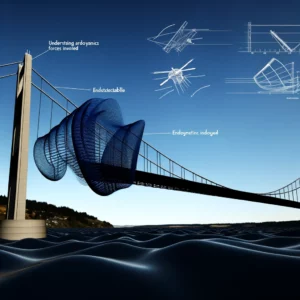
This bridge was the world’s third-longest suspension bridge when it was completed in 1940. It was constructed of materials that were lighter, thinner and more flexible than materials used on suspension bridges in the past, and it had the deepest piers secured in the water beneath. The issue with this bridge was that the materials couldn’t stand up to the winds that often blew through the area.
On the fateful day of the collapse, the wind caused the bridge to undulate, which led to a cable snapping. Once that happened, a twisting motion was added to the bridge, which is called torsional flutter, that continued to get worse. Eventually, the bridge collapsed. There were no fatalities, and the accident has been used by engineers to determine how the wind impacts large structures.
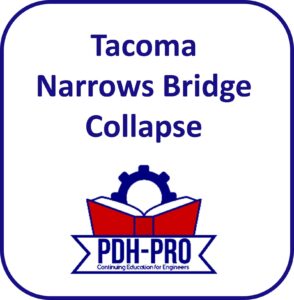 As soon as construction on this bridge was completed, engineers noticed that it moved in the wind, and they instantly got to work to figure out why and if there was a way to correct the problem. After the bridge collapsed and further investigations were performed, it was found that it was aerodynamically unstable along the transverse direction.
As soon as construction on this bridge was completed, engineers noticed that it moved in the wind, and they instantly got to work to figure out why and if there was a way to correct the problem. After the bridge collapsed and further investigations were performed, it was found that it was aerodynamically unstable along the transverse direction.
It was also found that the vertical girders and H-shape of the bridge allowed for flow separation. This led to vortex generation that matched the phase of oscillation. The energy that was created by the vortices was enough to push the girders out of their original position.
While this problem wasn’t new, it hadn’t been studied in-depth before. Changes have been made to structures since this incident to ensure that buildings, bridges and other structures can withstand winds. Many good things came from this incident, and it’s miraculous that no one lost their life.
Want to know more about the Tacoma Bridge incident? This video provides great footage of the collapse.
Hyatt Regency Hotel Walkway Disaster
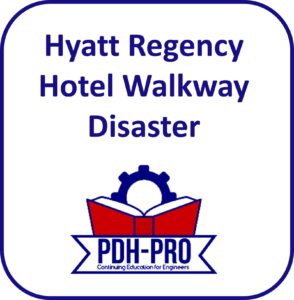
At the time, this was the deadliest structure collapse in the history of the U.S., and it claimed the lives of 114 people. On July 17, 1981, two vertical walkways in the Kansas City Hyatt Regency collapsed into the lobby. Upon investigation, it was found that there were serious design flaws in the structures. The engineers who had approved the final drawings were convicted of misconduct and gross negligence, which led to the loss of their engineering licenses.
The walkway collapse wasn’t the only problem that hit this hotel. During the construction of the building, the timeline was set back when connections in the atrium failed and the roof collapsed. It was also during construction when a design flaw was found. Contractors decided to make a change, and this resulted in the connection between the fourth-floor bridge and the atrium roof becoming double-loaded.
Originally, the support beams and tie rods had been designed to hold the weight of each walkway and accounted for any people who might be standing on it. Even though the design change was subtle, it was enough to critically undermine the structure’s safety. This led to the connections failing, and the fourth-floor and second-floor bridges fell to the atrium’s floor.
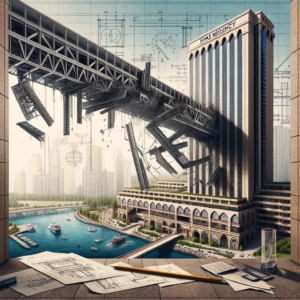 In addition to the bridges collapsing, the building also had damaged sprinkler systems. When the rescue crew arrived to help the injured, they were unable to turn the water off. This is because the systems weren’t connected to the city water supply, they were connected to tanks. The front door acted as a dam, trapping the water inside. Thus, the chances of drowning were also a serious concern for the people inside the hotel.
In addition to the bridges collapsing, the building also had damaged sprinkler systems. When the rescue crew arrived to help the injured, they were unable to turn the water off. This is because the systems weren’t connected to the city water supply, they were connected to tanks. The front door acted as a dam, trapping the water inside. Thus, the chances of drowning were also a serious concern for the people inside the hotel.
During the investigation, it was found that the tie rods were to blame for the collapse. Originally, they were supposed to be continuous rods, but the manufacturer had concerns about those types of tie rods. They believed that the tie rods needing to be threaded along their entire length meant that they could be damaged as the walkway was being hoisted. This would render them useless.
Thus, the design was changed to include two sets of rods instead of the originally designed continuous ones. One set of these tie rods was used to connect the fourth floor to the atrium roof, and the other attached the second-floor walkway to the fourth-floor walkway.
During the investigation, it was found that the design changes, communication issues, incorrect or no calculations and general negligence all contributed to the collapse. In some cases, the design changes were confirmed over the phone instead of a competent professional double-checking the documentation or calculations. If the necessary steps had been taken, it’s possible that this tragedy and loss of life could have been avoided.
Your Duty as an Engineer
Throughout the course of history, there have been innovations and engineering inventions that have made life easier and advanced humanity into the future. All ideas and creations are subject to flaws and go through a testing period, but by the time the project is finalized, the design should be near perfect. If it’s not, it could lead to disaster and death.
Whether designed by a civil, mechanical, structural or environmental engineer, every item that is constructed to improve human existence should be scrutinized and every detail double-checked to ensure their safety. No human is perfect, which is why having a quality control process and check system in place is beneficial. It’s also recommended that if issues are found and brought to the forefront, instead of being ignored or considered to be too costly, they should be investigated.
No matter what kind of engineer you become, you have the opportunity to create some ground-breaking and life-changing designs. To ensure they benefit humanity and society, you need to strictly adhere to rules, regulations and processes, as well as have high ethical standards. The least of your worries will be getting your engineering license taken away. The death of people can haunt you forever.
